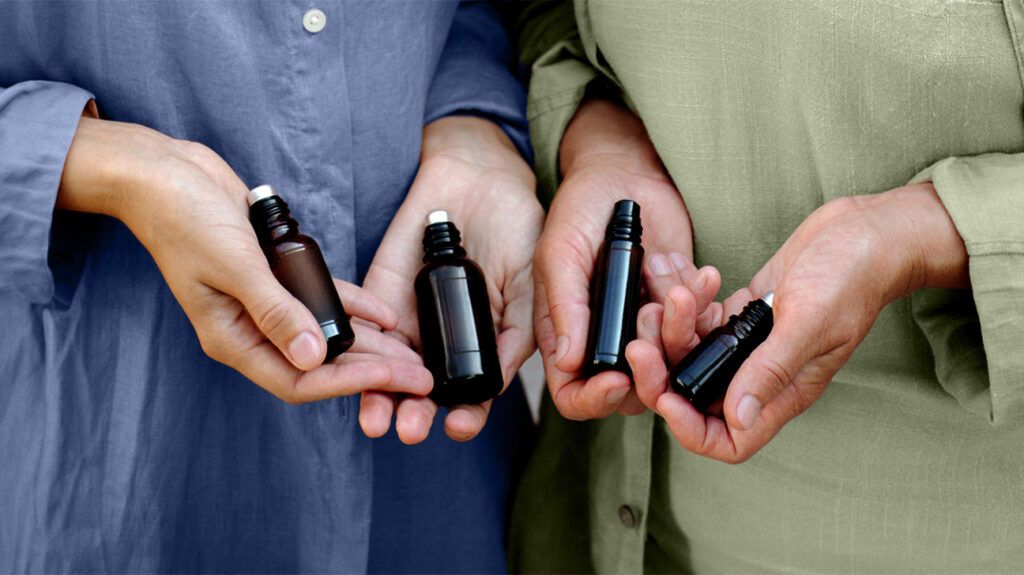Aromatherapy, also known as essential oil therapy, is the use of essential oils to manage health or boost well-being. However, research on its effectiveness is limited.
Essential oils have been used for thousands of years, with the aim of improving a person’s health or mood.
The National Association for Holistic Aromatherapy (NAHA) defines aromatherapy as the practice of using natural plant extracts, such as essential oils, in various ways “to heal the body, mind, and spirit, returning the body to a state of equilibrium.”
Some people claim that aromatherapy can complement traditional medicine by helping with pain, nausea, and depression, amongst other health benefits. However, there’s not enough research to determine their effectiveness in human health.
Read on to learn more about aromatherapy, including how to use essential oils and their proposed benefits and risks.

Aromatherapy is normally administered through inhalation or as a topical application.
A person can inhale essential oils using a diffuser, spray, or oil droplets. They can also be added to a hot bath and breathed in.
Inhalation
Inhaling essential oils stimulates the olfactory system, the part of the brain connected to smell, including the nose and brain. Molecules that enter the nose or mouth travel to the lungs and, from there, to other parts of the body.
As the molecules reach the brain, they affect the limbic system, which is linked to emotions. Heart rate, blood pressure, breathing, and memory are also affected.
Topical
Alternatively, people can apply essential oils topically, like massage oil, or in bath and skin care products, allowing them to absorb through the skin.
Massaging the area where the oil is applied may boost circulation and increase absorption.
Supporters of aromatherapy claim it can help manage a variety of ailments, including:
- pain
- nausea
- anxiety, depression, and stress
- insomnia
- headaches
- circulatory problems
- menstrual problems
- skin problems
- digestive problems
However, there’s not enough research to determine their effectiveness in human health.
Nearly one hundred types of essential oils are available. Some popular ones include:
- Clary sage
- Cypress
- Eucalyptus
- Fennel
- Geranium
- Ginger
- Helichrysum
- Lavender
- Lemon
- Lemongrass
- Mandarin
- Neroli
- Patchouli
- Peppermint
- Roman chamomile
- Rose
- Rosemary
- Tea tree
- Vetiver
- Ylang-ylang
Using essential oils for aromatherapy comes with some potential risks, including:
- allergic reactions, including contact dermatitis
- gastrointestinal upset when ingested
- trouble breathing if essential oils come into contact with the nose
- chemical burns if essential oils come into contact with the eyes
- citrus essential oils may make the skin more sensitive to ultraviolet light, increasing the risk of sunburn
Indeed, a person should never apply essential oils directly to the skin. They must always be diluted with a carrier oil.
If the oil is mixed with a carrier, people should inform their aromatherapist about any nut allergies, as carrier oils are often derived from nuts and seeds.
If a person develops a new allergic response following the use of essential oils, they should stop using them immediately and avoid the scent.
Ingesting or swallowing essential oils is also not recommended. Taken by mouth, some essential oils can damage the liver or kidneys.
They may also lead to interactions with other drugs, and they can undergo unexpected changes while in the gut.
However, it is important to note that not all essential oils carry the same level of risk.
Aromatherapy may not be suitable for everyone.
Chemical compounds in essential oils may reduce the effectiveness of conventional drugs or exacerbate an individual’s existing health conditions.
Individuals with any of the following conditions should be extra careful when using aromatherapy:
Also, research has not proven aromatherapy safe for those who are pregnant or nursing, so it is not recommended for these people.
Ultimately, pregnant people orthose using medications of any type should first check with a qualified pharmacist or doctor before proceeding with aromatherapy.
An aromatherapist should take a thorough medical, lifestyle, and diet history.
Aromatherapy involves a holistic approach, aiming to treat the whole person. Treatments will be suited to the individual’s physical and mental needs. The aromatherapist may recommend a single oil or a blend based on these needs.
An aromatherapist is different from a massage therapist, although a massage therapist may use aromatherapy oils.
The NAHA can advise a person on aromatherapists in their area.
When storing essential oils, it is important to be aware that light, heat, and oxygen can affect their integrity. To be sure of the quality, products should come from a reputable and trustworthy supplier.
Following instructions carefully reduces the risk of compromising a person’s health.
Aromatherapy is currently an unregulated and unlicensed field, in terms of both its practice and the manufacture of aromatherapy products.
Indeed, the
Some beauty and household items, such as lotions, make-up, and candles, contain products that may appear to be essential oils, but they are really synthetic fragrances.
It is important to seek professional advice about aromatherapy practice, and its products, and to follow instructions carefully.
Aromatherapy, or essential oil therapy, uses plant extracts to promote well-being.
Essential oils can be inhaled or applied topically and may help alleviate pain, anxiety, and other conditions. However, the scientific evidence supporting these claims is limited.
While generally considered safe, essential oils can pose potential risks, such as allergic reactions, chemical burns, or drug interactions.
People with certain conditions, such as asthma or epilepsy, should be extra careful with using aromatherapy or essential oil products.
Ultimately, aromatherapy and essential oil products are unregulated and unlicensed. It does not provide a cure for diseases, rashes, or illnesses.
A person should consult healthcare professionals before proceeding with aromatherapy and purchase products from trusted sources.


